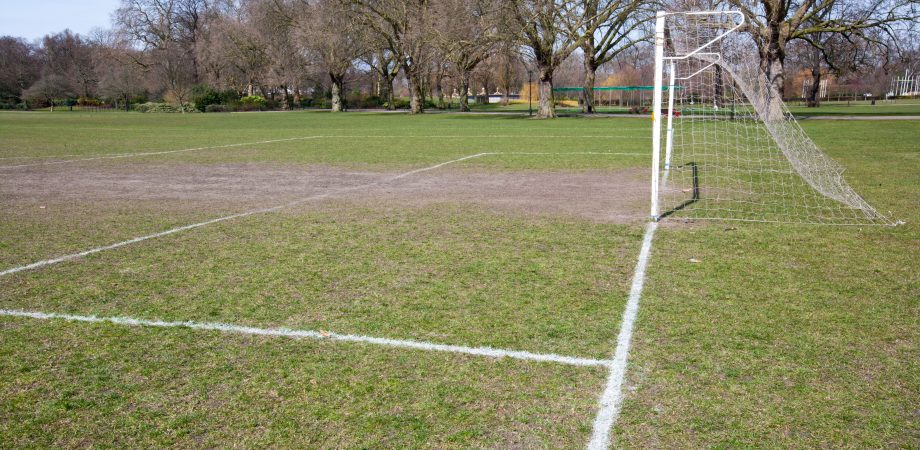Tips for Maintaining High-Traffic Turfgrass Areas

Maintaining high-traffic turfgrass areas, such as sports fields, golf courses, and recreational parks, can be a challenging task. These areas are subject to heavy foot and/or machine traffic, which can result in soil compaction, wear and tear, and overall decline in turf health. However, with proper care and management, it is possible to maintain lush, resilient turfgrass that can withstand intense usage and continue to provide a safe and visually appealing surface. In this article, we’ll explore essential tips for maintaining high-traffic turfgrass areas.
Soil Management:
The foundation of any healthy turfgrass area starts with the soil. Regular soil testing is crucial to determine its nutrient content, pH levels, and organic matter. Based on the test results, appropriate amendments can be applied to maintain optimal soil conditions. Aeration should be conducted periodically to alleviate soil compaction and promote proper root development, and can also be used as a tool in overseeding to speed up recovery of areas that are pushed too far.
Appropriate Grass Selection:
Choosing the right grass species and cultivar for high-traffic areas is essential. Cool-season grasses like Kentucky bluegrass and perennial ryegrass are often preferred due to their durability or fast recovery from damage. Warm-season grasses like Bermuda grass and zoysia are also viable options in regions with a hot climate. In some cases, an ideal species for traffic isn’t available or advisable for a specific region or application, so it might be wise to research the most traffic-tolerant varieties within a species to best fit your needs. Renovating with or transitioning through overseeding can be done with improved cultivars to increase performance, alongside many of these tips to maximize the benefit of your turfgrass spaces.
Proper Mowing Techniques:
Regular and appropriate mowing practices contribute significantly to the health and appearance of turfgrass. It is crucial to mow at the correct height and frequency for the specific grass species and desired application. Following the one-third rule is a common guideline to ensure you’re mowing frequently enough. Additionally, sharpening mower blades regularly and alternating mowing patterns can help prevent excessive wear on the turf. In some cases alternating mowing patterns or passes aren’t as possible, like cleanup passes around golf course putting greens or traffic from turning reel mowers after making passes in the same scenario. Backing off on cleanup pass frequency and incorporating rolling at a greater frequency, as well as utilizing “traffic mats” to lessen traffic from the twisting and turning of reel mowers is a way some golf courses will improve the turfgrass quality around the highly valuable surface’s edges.
Irrigation Management:
Effective irrigation is key to maintaining healthy turfgrass. Overwatering can lead to shallow root growth, while underwatering can cause stress and damage. It is advisable to water deeply and infrequently, allowing the soil to dry between irrigation cycles to encourage deeper root growth. Utilizing smart irrigation systems or weather-based controllers can ensure water efficiency. If the surface is valuable enough and high performance is required, the use of wetting agents as a tool for moisture management is commonplace.
Fertilization and Nutrient Management:
Turfgrass areas subjected to heavy traffic require additional nutrition to withstand stress and recover quickly, sometimes as much as double or more the amount of fertilizer required in non-trafficked areas. Regular fertilization through use of slow and/or fast-release fertilizers can be used strategically to provide long-term nutrition or a quick jolt when needing to boost back quickly, depending on the traffic schedule. Regularly testing the soil for nutrition is recommended to ensure your fertility plan matches the physical demand that is being put on the turfgrass, or rate at which the turfgrass is utilizing nutrients from the soil.
Overseeding and Renovation:
Over time, high-traffic turfgrass areas may experience thinning or bare spots. Overseeding or renovation can help rejuvenate the turf and bring it back to life, sometimes better than before with improved cultivars. Whether overseeding or overhauling your turf, ensuring the planted seeds have access to all things essential for survival including water, nutrients, sunlight, ideal temperatures, protection from predation. If possible, blocking further traffic from occurring can speed up recovery to resume activity faster than attempting to grow grass while remaining under stressful conditions. When this isn’t possible, many end users counter this by applying seed multiple times over the growing season to build up the soil’s seed bank and at least always have some turfgrass in the establishment phase until proper recovery and maturity are reached.
Traffic Management:
Managing foot traffic is vital for the maintenance of high-traffic turfgrass areas. Implementing strategies such as creating designated walkways, restricting access during unfavorable conditions, and employing temporary protective measures (e.g., using turf blankets or mats) can help minimize wear and compaction in heavily used areas. Examples may include golf courses dictating golf cart traffic by having path-only or 90-degree rules for traffic onto fairways, to blocking areas that receive extreme traffic. Sports fields might prefer to simply rotate fields if extra are available, implementing practices schedules that shift players around fields or remove them from highly valuable turfgrass surfaces entirely, albeit for enough time to allow turfgrass to recover.
Conclusion:
Maintaining high-traffic turfgrass areas requires a combination of proper soil management, appropriate grass selection, regular care, and often getting creative. By implementing these essential tips, turf managers can improve the longevity and resilience of turfgrass, providing safe and visually appealing spaces for recreational activities. Regular monitoring, adaptation to changing conditions, and adherence to best practices will help achieve thriving, high-traffic turfgrass areas.
Micah Gould
Barenbrug Market Development Manager (West) Pro Turf







